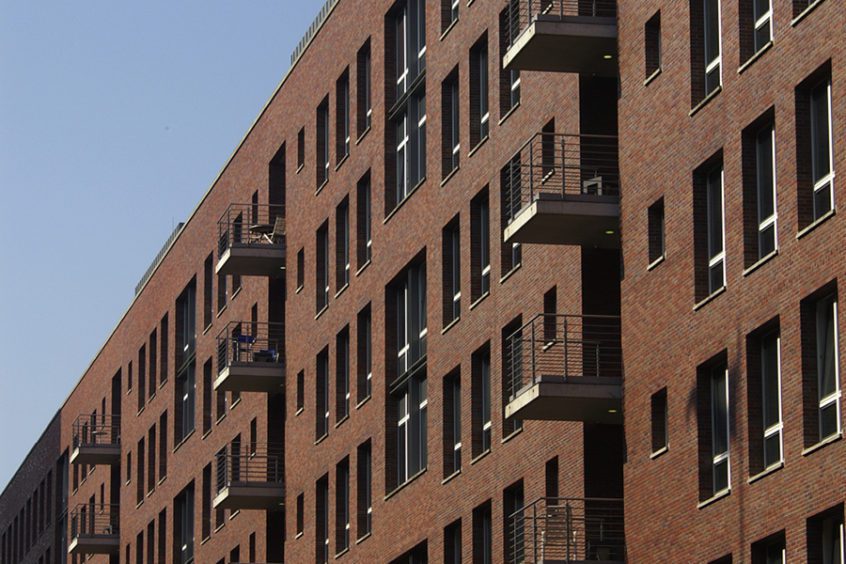Overall, the Class B segment of the multifamily apartment market has outperformed the Class A segment in the past several years; and that trend is forecast to continue. While new supply is greatly affecting the Class A apartment market with rent concessions, it is not having a material effect on the class B sector where we are focused.
Although we do like Class A apartments at the right price-point and in certain unique circumstances in today’s market, we believe that the Class B apartment market is overall a better value in today’s economic environment.
Some of these concerns about the impact of new development on the Class A market were pro led in a recent Wall Street Journal article titled: “Luxury Apartment Boom Looks Set to Fizzle in 2017 – Building glut outstrips demand, likely forcing landlords to slash rents” dated January 2nd, 2017.
The article states “Landlords of upscale properties across the U.S. are bracing for rough conditions in 2017 that will likely force them to slash rents and offer deep concessions as a glut of supply brings a seven-year luxury- apartment boom to an end.”
Class A buyers beware:
MPF Research has recently published some data and commentary on the different trends in Class A vs. Class B apartments on its website. In its article “New Supply Erodes Class A Apartment Rent Premium” dated 9/29/2016, MPF stated: “Annual rent growth among Class B units has outpaced Class A apartments for the past seven consecutive quarters. And that trend is likely to continue into 2017 when new supply levels are expected to peak.”
“Going forward, MPF Research expects a supply-in-duced slowdown in Class A rent growth in the short term as new apartment deliveries continue to mount. Currently, the average Class A-to-B rent premium is about $520. But the impending surge of new multifamily product coming online, combined with continued strength in Class B units, will likely continue to narrow that premium.”
Class B Properties (Middle-Tier/ Middle-Market) at Peak Occupancy and Continues to Drive Rent Growth:
MPF Research recently published an article on Class A vs. Class B apartment trends titled: “Apartment Occupancy Hits a 16-Year High in Q3 2016” dated 9/30/2016, MPF stated: “’Many properties, especially communities at the middle-tier price point, are completely full,’ RealPage chief economist Greg Willett said.
“The Class B sector’s middle-tier quality units are playing the biggest role in driving overall rent growth, as pricing in that product sector is up 4.9% year-over-year.”
“’With such big pricing differences seen between most new projects and typical existing units, additional construction isn’t impacting middle-market rent growth to the degree seen in past cycles,’ Willett said.”
Class B Properties with In ll Locations:
We have all seen it before. Brand new, Class A properties built by developers in sub-markets outside of town where land is cheap. The result is more and more development as other developers catch on that they can build it, lease it quickly and sell at today’s historically low cap rates to long-term buyers. The problem with this for the long-term investor is that as new supply comes on-line it is all too common to see concession wars amongst properties offering one, two, three months free rent, a at screen plasma TV, cruise vacations, etc. to potential renters to get them to sign new leases. For long-term investors, this often means lower than projected revenue, higher than projected vacancy, lower than projected net operating income and ultimately lower than expected cash flows and values to investors.
We believe that purchasing Class B properties in mature submarkets that we consider in ll to be where we should be buying for value in today’s market. These are neighborhoods that have been built-out 20-30 years ago and there is a lack of available land for development. We like neighborhoods with plenty of single family homes, office space, schools, country clubs, etc. that have taken up available space and make it very difficult for a developer to build a competing property due to the ultra-high cost of land. We also like that commuting times for our residents at these Class B properties are oftentimes drastically shorter than for those in Class A properties much further outside of town. Lower commutes, lower rents, ample amenities and a broader tenant-base all can be summarized as having the potential for fewer surprises over our hold period.
The class B apartment properties we are targeting have a similar amenity set compared to class A apartments and are professionally managed just like class A apartments. We are generally targeting class B apartments that have been recently updated. Tenants receive the same screening and must meet the same income, credit, and background standards that they would have to meet at class A apartments.
The class B communities are generally older compared to class A and some of the finishes in the amenities and interiors aren’t quite as fancy. However, the potential bene t for investors is that the rental rates at Class B properties are significantly lower compared to Class A properties and there are many more households who can afford to rent apartments at Class B properties in times of economic difficulty, potentially ensuring that there will be demand in good times and bad.
The tenant base at Class B properties tends to more often be a renter by necessity and is less likely to move for a home purchase or to move into a newly constructed apartment property so resident retention tends to be better. We also see that in many Class B properties we have a meaningful percentage of our tenants that have been at the property for 3, 5 and even 10+ years. The resulting cost savings of not having to turn these long-term rental units every year or two years can be quite meaningful when adding up the cost of painting, carpeting and labor all which can positively affect our bottom line, increase Net Operating Income (NOI) and the resulting increase in value.
We believe that many Class B multifamily assets offer us an opportunity to proactively improve the apartments to potentially achieve rent increases and value enhancement which may not be available in many Class A properties, especially new construction that is already leasing at the top of the market and bought at historically low cap rates in the 5% range. We believe that well-maintained Class B multifamily assets are more stable and provide a better value compared to Class A assets at the current time in the cycle.
References:
http://www.wsj.com/articles/luxuryapartmentboomlookssizzlein20171483358401
http://www.realpage.com/mpf-research/new-supply-erodes-class-a-apartment-rent-premium/ & http://www.realpage.com/mpf-research/apartment-occupancy-hits-a-16-year-high-in-q3-2016/
All real estate contains risk. Please read the full private placement memorandum for a discussion of each property’s business plan and risk factors. There are no guarantees for projected cash flow and/or appreciation. Please do not invest in real estate offerings if you cannot afford to lose your entire investment principal.

